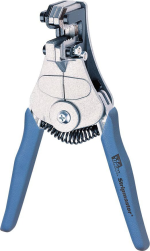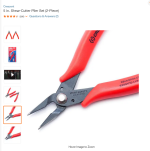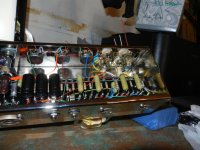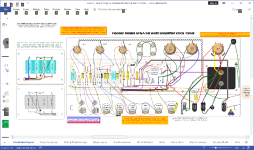Synchrony Pedalworks
Well-known member
I thought I had read a post a while back lamenting the struggles of wire insulation melting when soldering. I asked my Pops, who is an EE, about techniques to prevent the melting.
Others might already know, but using a heat sink can cure the issue. To help, I left a longer lead on the wire, so that I can clip a small alligator clip to the wire. By doing so, I had longer contact time with the soldering iron, so that the solder had better adherence to the jack and there was no melting!
Cheers

Others might already know, but using a heat sink can cure the issue. To help, I left a longer lead on the wire, so that I can clip a small alligator clip to the wire. By doing so, I had longer contact time with the soldering iron, so that the solder had better adherence to the jack and there was no melting!
Cheers






